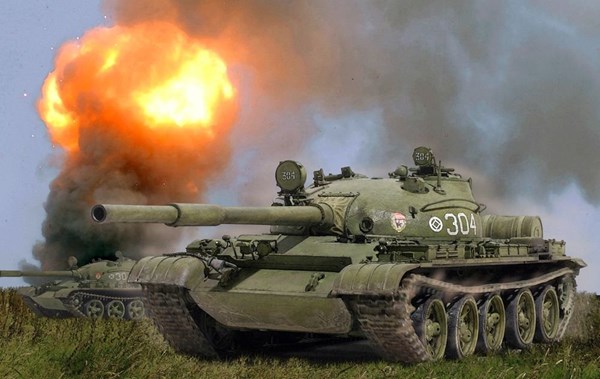Reinforced armor fails to save Russian T-62 tanks in Syria
Doubts have arisen regarding the defensive capabilities of modern and “modernized” Russian military vehicles following the destruction of three T-62 tanks in a single battle in Syria, writes the Vietnamese news outlet BaoDatViet.
In battles with rebels in Idlib and Latakia last week, Syrian government forces lost five tanks, and many other military vehicles were damaged. Three of the destroyed vehicles were identified as T-62M tanks.
The published pictures clearly show that the tanks were hit where they are most vulnerable – from above. Experts at the Lebanese newspaper Al-Masdar News have observed before that Russia’s T-90 tanks have the same Achilles’ heel.
An attack from behind and above has always been their bane, writes BaoDatViet.
In order to overcome these fatal flaws, Russia had to modify the armor for the T-62 before sending them to Syria: they were fitted with comprehensive composite protection or dynamic protection around the vehicle body. This improved the tank’s combat resilience.
As a result, the T-62’s level of protection increased considerably, unless the attack came from behind or from above. And this weakness was noticed by the rebels, even though their anti-tank weaponry was not new, BaoDatViet observes.
The Vietnamese authors surmise that the rebels probably fired at the tanks from elevated terrain in the vicinity.
“Death for the T-62s was effectively inevitable,” the news outlet remarks. The authors observe that this “condition” is shared by T-14 Armata tanks. During testing of the T-14, this weakness could not be overcome, despite powerful and highly effective dynamic protection. It is not clear where the Vietnamese reporters obtained this information.
Russia’s Scientific Research Institute for Steel and Alloys claims that the Armata’s armor is of a high level, capable of withstanding all types of 100-150 mm anti-tank rounds. However, BaoDatViet observes that this safety only applies when the tanks are fired at from 2 km away.
Russia has thus indirectly confirmed that the Armatas are unlikely to have a chance of surviving if fired at from less than 2 km. If this is truly the case, it would be pointless to upgrade the country’s fleet with the latest generation of Russian tanks, the news site concludes.
One gets the impression that the article may have been commissioned by parties that wish to drive Russia out of the Southeast Asian market.
